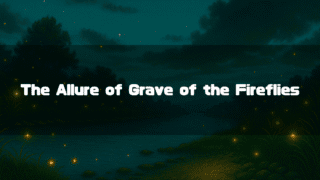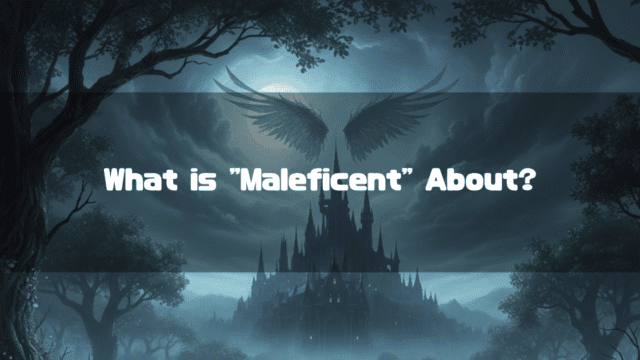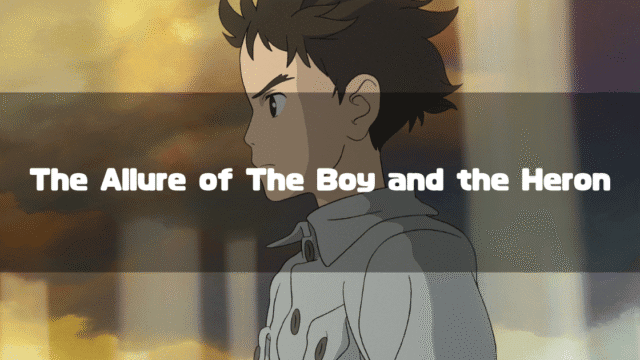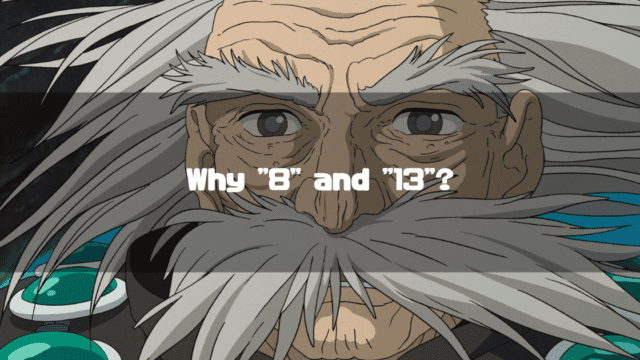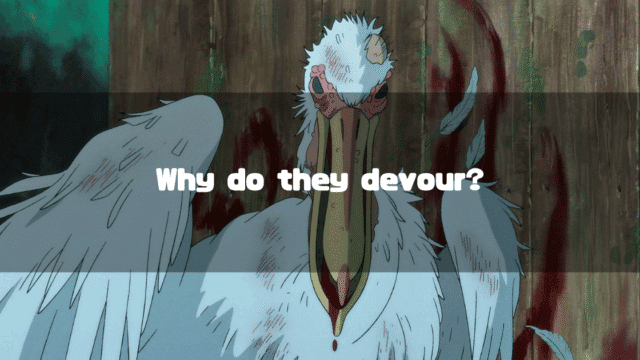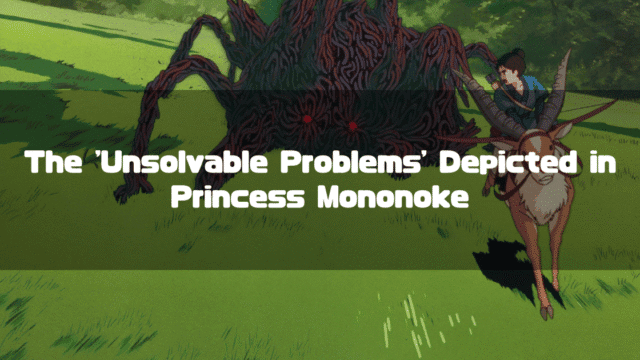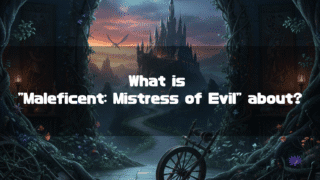“E.T. The Extra-Terrestrial” is a theatrical film directed by Steven Spielberg, released on June 11, 1982.
It’s a film I’ve loved since I was young, but what truly captured my heart as a child were things like:
- The mysteriously shaped spaceship (and its interior)
- The incredibly delicious-looking Reese’s Pieces
- The communication device built from scraps
Watching “E.T.” as an adult, I find it just as entertaining. In fact, I think it’s even more interesting now with the added perspectives that come with age.
The most important being in “E.T.” is, of course, the alien E.T. himself. Since humanity has not yet made contact with intelligent extraterrestrial life, his existence is, of course, a work of fiction.
And this film depicts another crucial element of fiction: “E.T.’s death and resurrection.“
This time, I want to explore the movie “E.T.” focusing on this “death and resurrection.” The key question that will guide this analysis is: “In addition to the fiction of an ‘alien,’ why was it necessary to layer on the fiction of ‘death and resurrection’?“
With this question in mind, this article will ultimately consider “the reason E.T. was found collapsed by a river” and “the reason for depicting E.T.’s death and resurrection.” Finally, I will delve into the “mystery of the Man with the Keys,” who appears from the beginning of the story.
First, let’s look back at the synopsis of the movie “E.T.”
*This article is an English translation of the original Japanese article, “【E.T.】ネタバレあらすじと考察-E.T.は何故、川辺で倒れ、そして復活したのか?-“.
Let an AI walk you through the highlights of this post in a simple, conversational style.
- E.T.’s Approachability, Depicted Through Clever Direction
Through directorial choices like showing E.T. collecting plants at the beginning of the story and using Reese’s Pieces as a token of friendship, the film skillfully demonstrates that E.T. is a “safe and friendly being,” not an invader, without relying on words. Furthermore, the “duality” of his advanced intelligence and childlike innocence adds depth to his character. - E.T. as an “Imaginary Friend” to Fill the Void of Loneliness
E.T. is a reflection of Elliott, who suffers from the loneliness of his father’s absence. He is the embodiment of the “imaginary friend” born from the director’s own formative experience of his parents’ divorce. Therefore, while clearly an alien, he is portrayed as a character with a “duality,” existing within Elliott’s inner world. - The Mystery of E.T.’s Death and Resurrection, Brought on by the Sickness of “Loneliness”
E.T.’s weakening and death are a physical manifestation of the psychological damage of “loneliness.” His collapse by the river symbolizes the life-threatening pain he felt at the boundary between Earth (this side) and his home (the other side). He makes a miraculous recovery upon being freed from loneliness by the approach of his fellow aliens’ spaceship. - The Role of the “Man with the Keys” as a Foreshadowing of Elliott’s Future
The “Man with the Keys,” whose involvement in the story is minimal, serves to guarantee that Elliott can grow up to be a fine adult even after experiencing the farewell with E.T. Furthermore, he is positioned as a character projecting director Spielberg himself, who overcame loneliness and sorrow to become an adult.
- Synopsis of the Movie “E.T.” (Spoilers Included)
- A Quick Summary, Character Map, and Explanation
- Close Encounters
- Meeting the Boy
- A Secret Cohabitation
- A Deepening Bond and a Longing for Home
- The Halloween Night Plan and a Creeping Shadow
- A Sudden Separation and a Life-or-Death Crisis
- A Miraculous Revival and the Great Escape
- Eternal Friendship and Farewell
- Analysis of the Movie “E.T.”
- Steven Spielberg’s Masterful Visual Storytelling: Instantly Conveying E.T.’s “Safety” and “Friendliness”
- The “Duality” of Advanced Intelligence and Pet-Like Cuteness
- E.T. as “Something That Exists, Yet Doesn’t Exist”—Elliott and E.T. as Two Halves of a Whole
- The Biggest Mystery: Why Did E.T. Collapse by the River, and Then Resurrect?
- The Mystery of the Man with the Keys: A Stand-in for Steven Spielberg Who Lived on Resiliently
Synopsis of the Movie “E.T.” (Spoilers Included)

A Quick Summary, Character Map, and Explanation
-
Encounter with a Lonely Alien
An alien, left behind alone on Earth, hides in the home of a boy named Elliott. Only Elliott and his siblings know of his existence. They name him “E.T.” and begin a secret life together. -
A Deepening Bond and a Looming Shadow
Elliott and E.T. deepen their bond while living together in secret. To fulfill E.T.’s wish to return home, they plan to build a communication device, but the shadow of a government agency that has sensed their presence quietly closes in. -
Government Pursuit and a Life-or-Death Crisis
On Halloween night, Elliott and E.T. spend the night in the forest attempting to communicate. However, E.T. has vanished by the next morning and is later found in a weakened state. Though brought back home, the government agency finally storms the house, placing both the dying E.T. and Elliott in quarantine. -
A Miraculous Revival and Farewell
Though his heart stops, E.T. is miraculously revived upon sensing the arrival of his rescue ship. With the help of his friends, Elliott breaks E.T. out of quarantine and heads to the location of the communication device. In the forest where the rescue ship has landed, Elliott and E.T. bid farewell, vowing eternal friendship.
Character Map
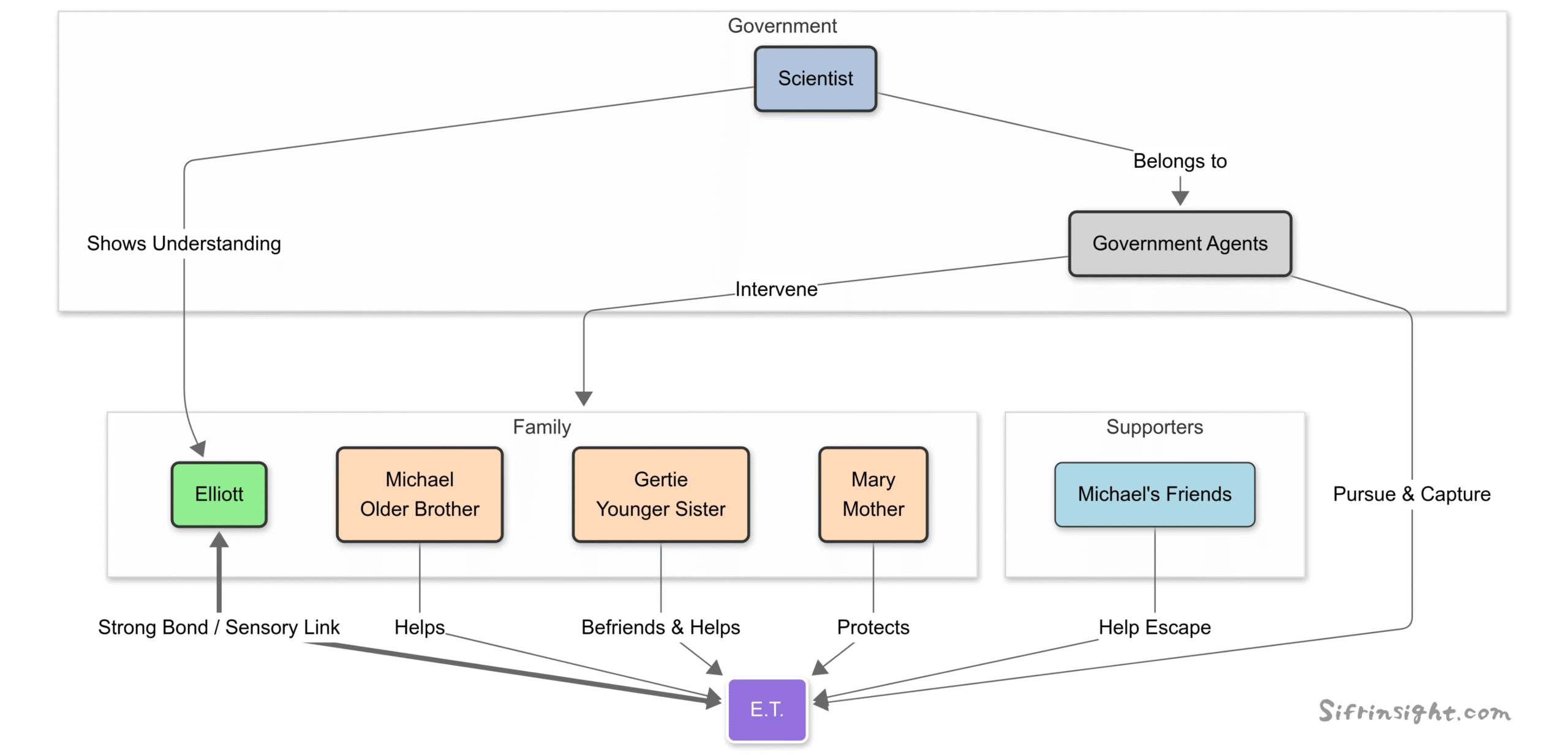
Story Explanation
The most important presence in the film “E.T.” is, of course, the alien E.T. Therefore, it’s fundamentally a story about an “extraterrestrial,” but… it’s clearly different from “Alien” or “Predator.” In fact, it might be unlike any other story featuring extraterrestrial life.
E.T.’s role in the story seems most significant as something one wouldn’t normally encounter, something outside one’s own common sense.
It could have been an unseen animal, a dinosaur surviving from ancient times, or a fairy met in the woods.
The most crucial thing is that the boy, Elliott, is dealing with the “loneliness of a father’s absence,” and E.T. was a being who could share that kind of “loneliness” (E.T. carries the sadness of being left behind by his companions).
At the end of the story, Elliott ultimately parts with this soulmate-like figure, but this fact is portrayed not merely as sadness, but as the boy’s growth.
The choice of an “alien” as the being to share this “loneliness” was exquisite. Compared to the “unseen animal,” “ancient dinosaur,” or “fairy” mentioned above, the idea of an alien had already become a “plausible existence,” which likely worked in its favor.
The “Roswell incident (Wikipedia)” had happened long ago, and Captain Armstrong had landed on the moon in 1969. And the director himself had already made “Close Encounters of the Third Kind” (1977).
At the same time, people’s scientific literacy was increasing, so a sense may have been brewing that, from a probabilistic standpoint, it was more unnatural to think aliens *didn’t* exist (whether they would come to Earth is another matter).
Furthermore, as I will quote later in the “Analysis” section, interviews with director Steven Spielberg reveal that his personal experiences are heavily reflected in the film. This movie is deeply colored by the loneliness Steven Spielberg felt in his childhood and the sorrow of his parents’ divorce.
Moreover, during that lonely period, Steven Spielberg had an alien as an imaginary friend.
Considering only the narrative of the movie “E.T.,” the appearance of an alien isn’t strictly necessary. However, I believe the combination of the era’s backdrop and Steven Spielberg’s own childhood experiences led to the inclusion of an alien.
From here, let’s delve into the synopsis in more detail to prepare for a deeper analysis.
Close Encounters
In a quiet pine forest near a residential area in America, a mysterious spaceship is parked one night. The crew, a group of aliens, are carefully collecting Earth’s plant life. However, just as one of them strays a little from the group, multiple headlights illuminate the woods, and cars full of humans approach at high speed. The other aliens hastily retreat to the spaceship, but the separated one, in a panic, tries to follow but doesn’t make it. The spaceship takes off, leaving him behind.
Meeting the Boy
With nowhere to go, the alien flees to a nearby residential area and hides in a shed of a certain house. A boy named Elliott, who lives in that house, senses a presence in the shed and calls for his brother Michael, his friends, and his mother, Mary. However, by the time they arrive, the alien is gone, and they conclude the noise must have been “a coyote.”
But Elliott, unconvinced, begins to search on his own with a flashlight. He follows the trail into a vast cornfield and finally comes face to face with the alien. However, at their mutual cries of surprise, the alien disappears back into the darkness.
Elliott continues his search the next day. At the dinner table that night, he tells his family about the strange creature he saw, but his brother, his mother, and even his young sister Gertie refuse to believe him. Elliott mutters that his estranged father would have believed him, a comment that casts a heavy mood over the family.
A Secret Cohabitation
That night, Elliott is reunited with the alien near the shed. The alien softly offers the Reese’s Pieces that Elliott had dropped during his search earlier that day. Elliott uses the candies as a trail to successfully guide the alien to his room. Though they cannot communicate with words, they manage to understand each other through gestures, and a tired Elliott eventually falls asleep.
The next day, Elliott fakes being sick to stay home from school and deepens his bond with the alien hidden in his closet. When his brother Michael returns from school and his sister Gertie happens to enter the room, the alien’s existence becomes known to them. Thus, his presence becomes a secret shared only among the three siblings.
The alien uses its mysterious power to levitate the planets of a solar system model, showing them that it is a life form from beyond Earth. After hearing the term “extra-terrestrial” from his brother’s friend, Elliott starts calling the alien “E.T.”
A Deepening Bond and a Longing for Home
Strangely, a synchronous phenomenon begins to occur between Elliott and E.T., allowing them to share sensations. When E.T. drinks a beer from the fridge at home, Elliott, far away at school, gets drunk in class. When E.T. bumps his head, Elliott feels the pain.
When Elliott gets home, he finds that E.T. has learned to speak in broken phrases with the help of television shows and his sister Gertie. E.T. then says, “E.T. phone home,” conveying to Elliott and his siblings his desperate wish to contact his companions. They begin to gather things from around the house that could be used as parts for a communication device. During this time, Elliott injures his finger, but E.T. instantly heals the wound with his glowing fingertip.
The Halloween Night Plan and a Creeping Shadow
Using the collected junk, E.T. skillfully assembles a communication device. On Halloween night, Elliott and the others disguise E.T. as a ghost by draping a sheet over him and take him deep into the forest, hidden amongst the festival’s chaos. The plan is to set up the communication device there and send a message to his home planet.
However, while they are away, a suspicious shadow creeps into the house, searching for traces of E.T. A government agency had already begun its operation.
A Sudden Separation and a Life-or-Death Crisis
When Elliott wakes up after spending the night in the forest, E.T., who should have been beside him, is gone. Feeling terribly weak and lonely, Elliott returns home to find his mother talking to the police. Feeling ill, Elliott desperately begs his brother Michael to find E.T. Michael heads to the forest on his bike, managing to shake off a suspicious pursuing car, and finds E.T. by a river, turned white and lying motionless. He rushes him back home.
Faced with a dying E.T., Michael and the others finally tell their mother everything. But before she can process the situation, men in hazmat suits from the government agency storm the house. They quickly turn Elliott’s home into a quarantine facility and begin treating and studying E.T. and Elliott.
During their investigation, they discover that the two share perfectly synchronized brainwaves. One scientist quietly tells Elliott, “I’ve been waiting for him since I was 10 years old, too. I don’t want him to die.” He has already found the communication device left in the forest and understands from his conversation with Elliott that it was meant to call E.T.’s companions.
A Miraculous Revival and the Great Escape
As the treatment continues, the brainwave synchronization between Elliott and E.T. suddenly breaks. The next morning, Elliott has fully recovered, but E.T.’s condition takes a turn for the worse, and his heart stops. E.T. is placed in a freezer container. As a grief-stricken Elliott speaks to the motionless E.T. alone, E.T.’s chest suddenly begins to glow red, and his heart starts beating again.
He had sensed the arrival of the rescue ship from his home planet. E.T. had made a miraculous recovery. Elliott conspires with his brother Michael and makes a desperate escape, driving off in a van with the container holding E.T. Pursued by the police, Michael’s friends join them on their bikes, and with the help of E.T.’s supernatural powers, they push forward towards the forest.
Eternal Friendship and Farewell
When they reach the clearing in the forest where they had set up the communicator, a massive spaceship descends from the night sky with a dazzling light.
Their mother and Gertie also arrive, along with the scientist. Before boarding the spaceship, E.T. invites Elliott, saying “Come,” but Elliott, with tears in his eyes, shakes his head and replies, “Stay.” E.T. gently touches Elliott’s forehead with his glowing finger, and the two embrace tightly. After exchanging words of farewell, E.T. boards the spaceship.
The spaceship takes off with a brilliant light and quickly disappears into the night sky. In its wake, a beautiful rainbow arches across the sky, as if to bless their friendship.
Analysis of the Movie “E.T.”

Steven Spielberg’s Masterful Visual Storytelling: Instantly Conveying E.T.’s “Safety” and “Friendliness”
At the beginning of the story, the sight of E.T. curiously collecting Earth’s plants clearly expresses that he is not an invader but an intelligent explorer, masterfully giving the audience a first impression of a “safe alien.”
This alone sufficiently conveys E.T.’s “harmlessness,” but the use of Reese’s Pieces as a device makes it definitive.
E.T. picks up the Reese’s Pieces that Elliott dropped in the forest during his search, and there is a scene where he offers them during their second encounter. This skillfully utilizes how important “candy” is to a child and how it can be a token of friendship, portraying an “alien you can be friends with” through visuals alone, without relying on words.
From the perspective of “using candy,” one might find a parallel in the fruit drops from “Grave of the Fireflies.” The “candy” of the fruit drops appears as a symbol of “the time when children can be children,” and their depletion expresses the loss of a precious time that can never be recovered. I believe this expression is meaningful precisely because “candy” is an inseparable part of a child’s world.
In any case, it’s about maximizing the meaning of “something small,” and it can be said to be a brilliant piece of direction showcasing Steven Spielberg’s skill.
The “Duality” of Advanced Intelligence and Pet-Like Cuteness
E.T. is a being with advanced scientific technology, capable of flying from outer space in a spaceship. On the other hand, when Elliott tries to teach him words, he exhibits a childlike innocence, such as putting a toy car in his mouth.
This imbalance creates E.T.’s “pet-like cuteness” and adds depth to his character. This “duality” is also effectively depicted in a scene where the family dog, Harvey, who had not appeared in the story until then, suddenly appears and barks aggressively at E.T.
Harvey may have recognized E.T. as an “enemy” threatening his territory and the affection of his owner. This suggests that, at that moment, E.T. is portrayed as a being in the same category as Harvey: a “pet.”
Thus, through the preparations of being “an alien, but harmless,” “an alien, but one you can befriend,” and “an alien, but like a pet,” E.T. becomes a being that transcends a simple “alien.”
E.T. as “Something That Exists, Yet Doesn’t Exist”—Elliott and E.T. as Two Halves of a Whole
“Non-existence” Portrayed Comically
To keep E.T.’s existence a secret from his sister, Gertie, Elliott spontaneously lies, saying, “Grown-ups can’t see him.” However, this line is not just a child’s fib; it’s also a crucial scene where the protagonist himself articulates the “existing, yet not existing” duality of E.T.’s being.
This duality is masterfully visualized later in a scene where the mother is with Gertie. Gertie tries to introduce her mother to E.T., who is right beside her, but the mother’s gaze is diverted at just the right moment, or E.T. is hidden by objects, so she never perceives him. It’s a comical scene, but it brilliantly expresses that E.T. is a mysterious being who certainly “exists” in the world of children but is treated as if he “doesn’t exist” in the reality of adults.
Steven Spielberg’s Childhood Experience of an Absent Father and Divorce
So, why did E.T. have to be depicted as a subtle being, “something that exists, yet exists”? A clue can be found in the relentless depiction of the “absent father,” which, by all accounts, has no direct bearing on the film’s plot. This relates to director Steven Spielberg’s own experiences.
Steven Spielberg’s father, an engineer, was a workaholic, and Spielberg seems to have felt lonely as a child. In a 2012 interview on CBS’s “60 Minutes” (Link to the CBS article), he said:
I missed my dad a lot growing up, even though we were together as a family. My dad was really a workaholic. And he was always working.
His parents later divorced. Although Steven Spielberg lived with his father, there was also an internal distance, as his father took the blame, and the director himself took his father’s words at face value and blamed him for a long time (they later reconciled).
On the other hand, the divorce itself was clearly a major blow to Spielberg. In an interview with film critic Roger Ebert, he stated the following (Link to the RogerEbert.com article):
From the very beginning,” Spielberg said, ” ‘E.T.’ was a movie about my childhood ? about my parents’ divorce, although people haven’t often seen that it’s about divorce. My parents split up when I was 15 or 16 years old, and I needed a special friend, and had to use my imagination to take me to places that felt good ? that helped me move beyond the problems my parents were having, and that ended our family as a whole. And thinking about that time, I thought, an extraterrestrial character would be the perfect springboard to purge the pain of your parents’ splitting up.
With this information as a clue, we can begin to see why E.T. in the film is not just a simple “alien” and why he was depicted as “something that exists, yet doesn’t exist.”
E.T. as a Stand-in for Elliott, and for Steven Spielberg
Based on the statements quoted above, it can be said that E.T. is “the embodiment of Steven Spielberg’s imaginary friend.”
And an “imaginary friend” is a being one creates for oneself, a being to converse with. It is, in other words, an inner other, and in truth, people converse with themselves through their “imaginary friends.”
Come to think of it, Elliott carried the loneliness of an absent father, and E.T. felt the loneliness of being left alone in another world. The two became beings who shared an intense “loneliness.”
And naturally, these two come to share their feelings, which is an expression of the fact that the two beings were, from the beginning, one and the same.
In the movie “E.T.,” E.T. is certainly a distinct alien who exists, but at the same time, he also exists as an imaginary friend to fill the loneliness of Elliott (and Steven Spielberg).
Through Steven Spielberg’s first-class skill, this duality is so naturally understood by us, the audience, that it ends up going largely unnoticed. This, I think, is another remarkable aspect of the film “E.T.”
And with this understanding, I believe we can now consider the reason why E.T. was found collapsed by the river, and the reason he made a miraculous recovery.
The Biggest Mystery: Why Did E.T. Collapse by the River, and Then Resurrect?
From here, I want to consider E.T.’s death and resurrection, but first, we must think about why E.T. gradually weakened.
“Loneliness” as a Force That Inflicts Serious Damage
As I have mentioned, the film “E.T.” strongly reflects director Steven Spielberg’s childhood experiences, namely the “sadness of an absent father” and the “sorrow of a broken family.”
Elliott also carried a similar “sadness of an absent father,” and E.T. carried the “sorrow of separation from his companions.” Furthermore, E.T. also had the added sadness of being “left behind.” All of these can be summarized as carrying “loneliness.”
The decline in E.T.’s life force is visualized by the wilting of the flower that E.T. himself had revived. The first time the flower begins to wilt is when he is building the communication device.
There is room for interpretation as to why his life force declines in that scene, but couldn’t it be considered that “his loneliness was reaching its limit, to the point where he was driven to build a communicator out of junk“? If he were thinking, “Earth isn’t so bad after all!” he wouldn’t be building a communicator in the first place.
And the fact that this loneliness is draining his life force seems to declare that “negative emotions like ‘loneliness,’ ‘sadness,’ and ‘sorrow’ are things that inflict physical damage on a person.” In a word, “‘Loneliness’ is a sickness unto death.”
In other words, I believe E.T.’s life force gradually declined because he was “consumed by loneliness.”
Why Was E.T. Found Collapsed by the River?
I think we are finally in a position to answer the fundamental question of this article: “Why was E.T. found collapsed by the river?”
And this question actually requires us to answer two separate questions: “Why did he collapse?” and “Why by the river?”
– Why did he collapse?
First, let’s consider “Why did he collapse?”
The night before, when they finally got the communication device working, Elliott says to E.T., “Stay with me.”
This means that within Elliott, the sorrow of parting with his friend E.T. was exploding.
And since E.T. shared sensations with Elliott, that sorrow likely flowed directly into him as well.
He was already at the limit of his loneliness, and then Elliott’s sorrow also poured in, causing E.T.’s life force to decline significantly, leading him to collapse by the river and eventually go into cardiac arrest.
I believe this was a way of depicting the intense damage that negative emotions can inflict, using E.T.’s physical state as a medium.
– Why was he found collapsed by the river?
Next, let’s consider the reason why E.T. collapsed by the river.
This also involves considering two questions: “Why wasn’t he near Elliott?” and “Why was a river chosen as the place for his collapse?”
– Why wasn’t he near Elliott?
On the night they operated the homemade communicator, Elliott, overcome with the sorrow of parting, falls asleep in a forest clearing.
E.T. is eventually found in a severely weakened state, but he could have just as easily collapsed next to Elliott. Yet, he was found by a river.
This is purely speculative, but I think the following possibilities can be considered:
- He was walking around nearby, looking at the sky for the spaceship.
- He was observing the forest plants until there was a change in the situation.
When waiting anxiously for his companions’ spaceship, it would be more unnatural to stay in one place. It seems more natural to think he was moving around, looking at the sky.
Moreover, since the beginning of the movie shows E.T. and his companions collecting plants, it wouldn’t be strange at all if he was looking at the plants in the forest while waiting for the spaceship.
It is likely that a combination of the two factors above led him to eventually reach the riverside and collapse there.
– Why was a river chosen as the place of his collapse?
Next, I’d like to consider the mystery of the “riverside.” One reason, of course, is that “it heightens the sense of tragedy.” It’s easy to imagine his body temperature dropping significantly due to the river water, creating a more tragic scene than simply collapsing in the forest, which in turn emphasizes the brilliance of the subsequent developments.
However, I want to consider a different aspect here.
What I want to emphasize is that a “river” can represent a “boundary.”
A “river” is a boundary line between “here” and “there.” In this case, “here” would be Earth, and “there” would be E.T.’s home planet.
Therefore, the image of E.T. collapsed by the river can be seen as a visual representation of the life-threatening “loneliness” he felt being left behind on “Earth (here).”
While this could have been expressed wherever he collapsed, the choice of the “river” as a boundary line makes the “pain of being ‘here’,” which was not visually apparent, more clearly expressed.
Thinking this way, I believe we can explain why a river was chosen as the place where E.T. collapsed.
Why was E.T. able to revive?
Based on what we’ve considered so far, the reason E.T. was able to revive at the end becomes clear.
In a nutshell, it would be because he was “freed from the ‘loneliness’ that leads to death.“
In the scene of E.T.’s revival, the area around his heart glows an impressive red, the meaning of which is properly depicted at the beginning of the film.
At the start of the movie, the chests of both E.T., fleeing from the humans who have come to the forest, and his companions waiting in the spaceship, are glowing red. This means they can communicate telepathically, and their chests glow when they use this ability.
Therefore, when E.T. was revived, it was because his companions had come close enough to communicate telepathically, and he was able to revive upon realizing this.
It is entirely a matter of convenience, but as we have considered, in this film, “psychological damage” directly translates to “physical damage.” Therefore, if the “psychological damage” is healed, the “death” resulting from “physical damage” can also be overcome.
The Mystery of the Man with the Keys: A Stand-in for Steven Spielberg Who Lived on Resiliently
Finally, let’s consider the “Man with the Keys” who appeared from the beginning of the story.
Towards the end of the story, it is revealed that he is a scientist, and he makes the following shocking statement:
“He came to me, too. I’ve been wishing for this since I was 10 years old. I don’t want him to die.”
If we take his words literally, it means he met E.T. (or some other alien) when he was 10 years old and had been longing for a reunion with that being ever since. This would also be the reason he became a scientist.
However, the problem is that this backstory for him doesn’t add much depth to the movie “E.T.”
Unfortunately, his existence has little impact on the film’s value. He doesn’t significantly affect the progression of the story, and his presence doesn’t double the emotional impact.
And yet, the master Steven Spielberg thought he should be included in the film. Why is that?
It’s because, perhaps, his figure is the future Elliott, a presence that proves Elliott can grow up to be a fine adult even after experiencing the farewell with E.T. at the end.
Of course, after seeing that ending, the audience would think that Elliott will grow up to be a fine adult. However, the issue of the “absent father” remains unresolved, and the pain of parting with a soulmate-like friend still exists.
In such circumstances, it might not be unreasonable to think that there was a need to depict a being that guarantees his future.
And, if you think about it, the one who most succinctly guarantees Elliott’s future is Steven Spielberg himself.
It was Steven Spielberg himself who carried the sadness of a workaholic, absent father and the pain of divorce. E.T. was his imaginary friend.
However, despite carrying such pain, he became a first-class film director. At the very least, he is living as a respectable adult. That is why, perhaps, he was able to depict a respectable adult figure as Elliott’s future.
In other words, it can be said that the Man with the Keys is the very image of Steven Spielberg, who grew up to be a respectable adult while carrying much sadness.
It could be said that this film was one with various “dualities.”
The above are my thoughts on the movie “E.T.” In the end, what matters most is that it’s “entertaining,” but since I had the chance, I tried to write down my various thoughts.
What I’ve written above is quite different from what I felt when I watched it as a child. For example, I used to think the reason E.T. got weak was because he used his special powers too much. I can’t say that’s not the case, but I also think there’s no evidence to support it.
Everyone enjoys movies in their own way, so anything goes.
What kind of movie was “E.T.” for all of you?
About the Author
Recent Posts
- 2025-09-27
E.T. The Extra-Terrestrial: Full Synopsis & Analysis: Why Did E.T. Collapse by the River and Come Back to Life? - 2025-09-21
Maleficent: Mistress of Evil Spoiler Review – An Analysis of its Abundant Plot Holes and the Abuse of the “Fairy Tale Structure” - 2025-09-16
Maleficent: Full Synopsis and Analysis – A Tale That Complements and Corrects the “Questionable Points” of Sleeping Beauty - 2025-09-15
An Analysis of Disney’s “Sleeping Beauty”: Plot Spoilers, Its Enduring Charm, Lovable Nitpicks, and Differences from the Original Tale - 2025-09-06
The Boy and the Heron: Characters, Voice Actors & Analysis





